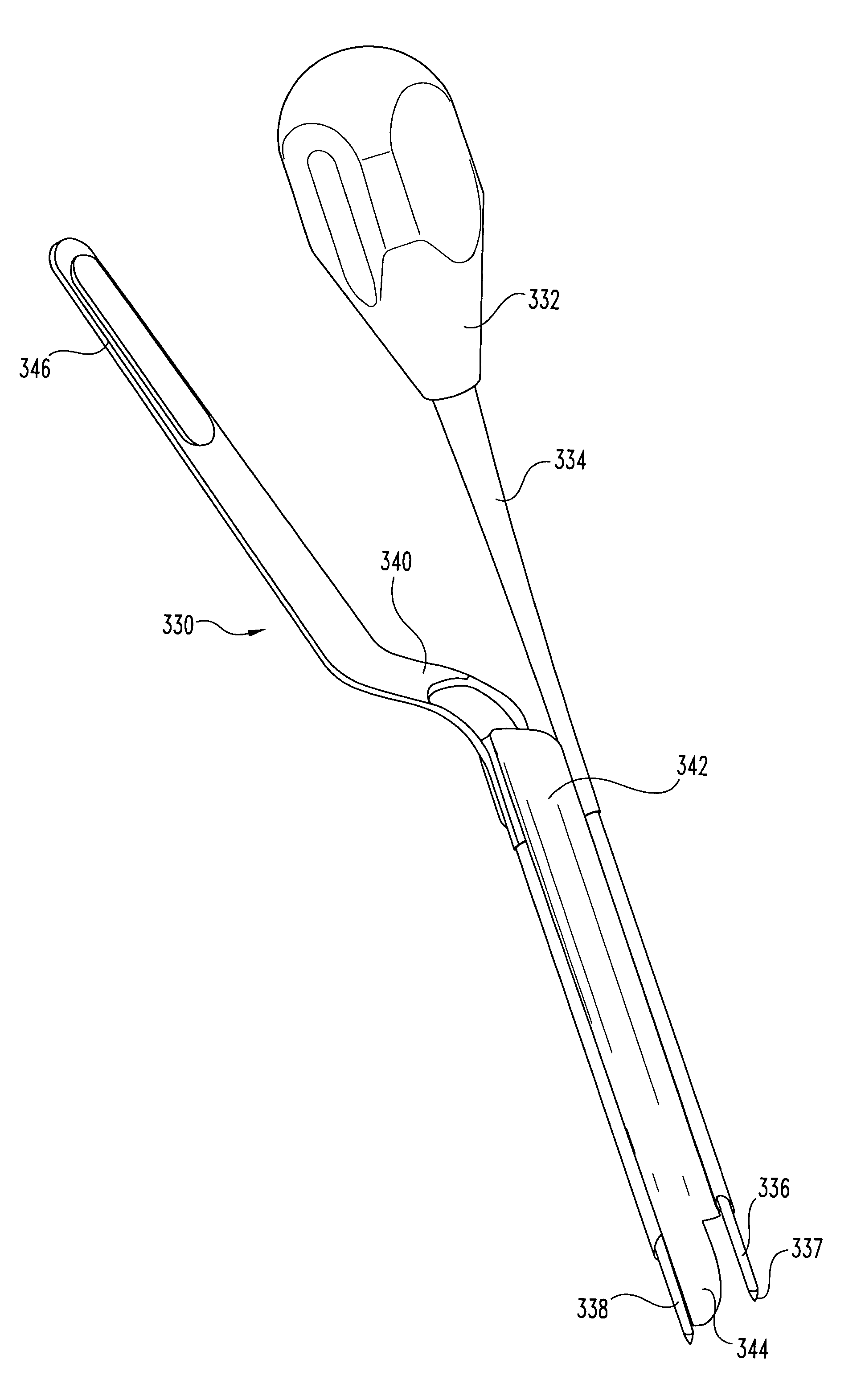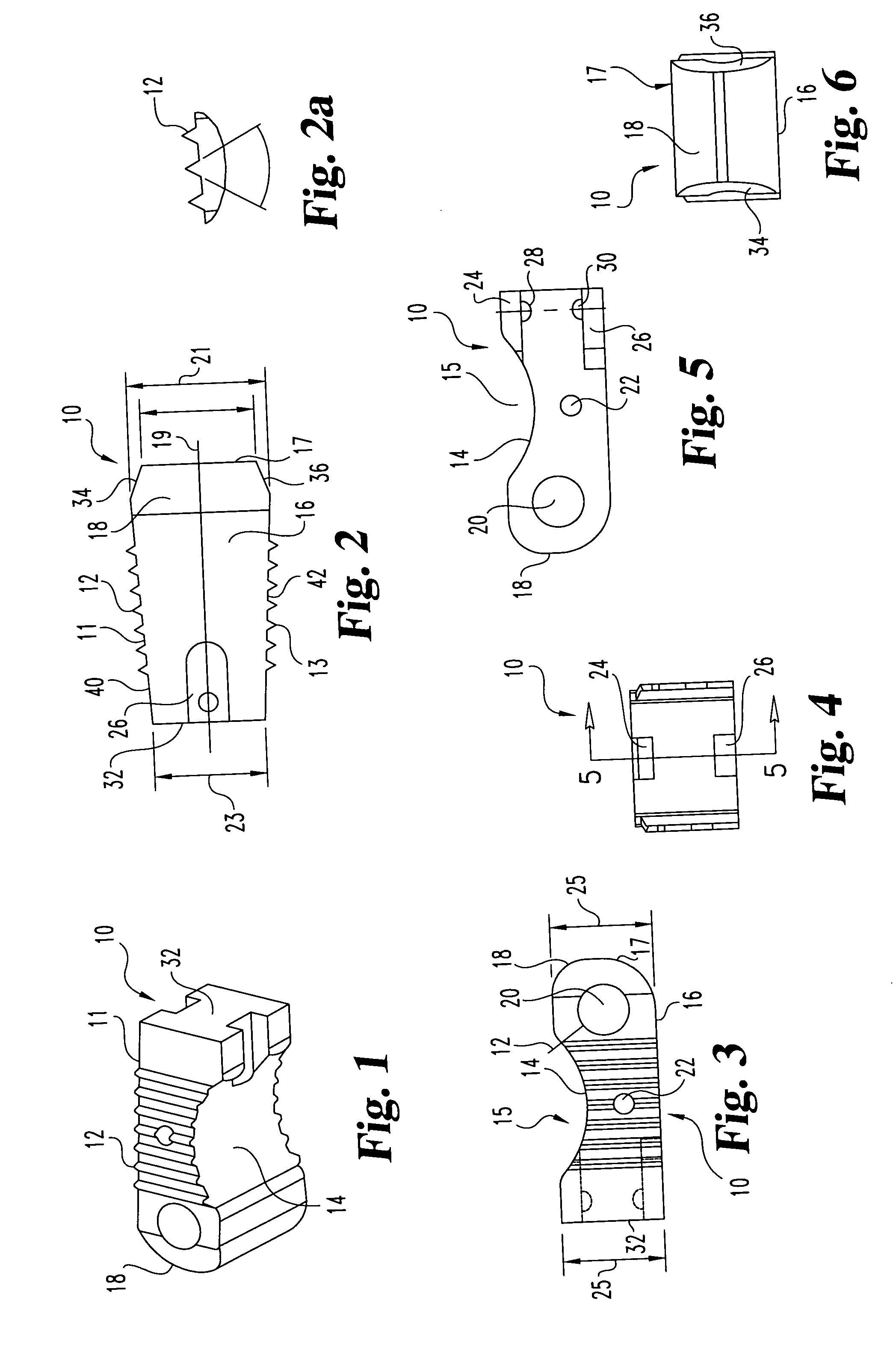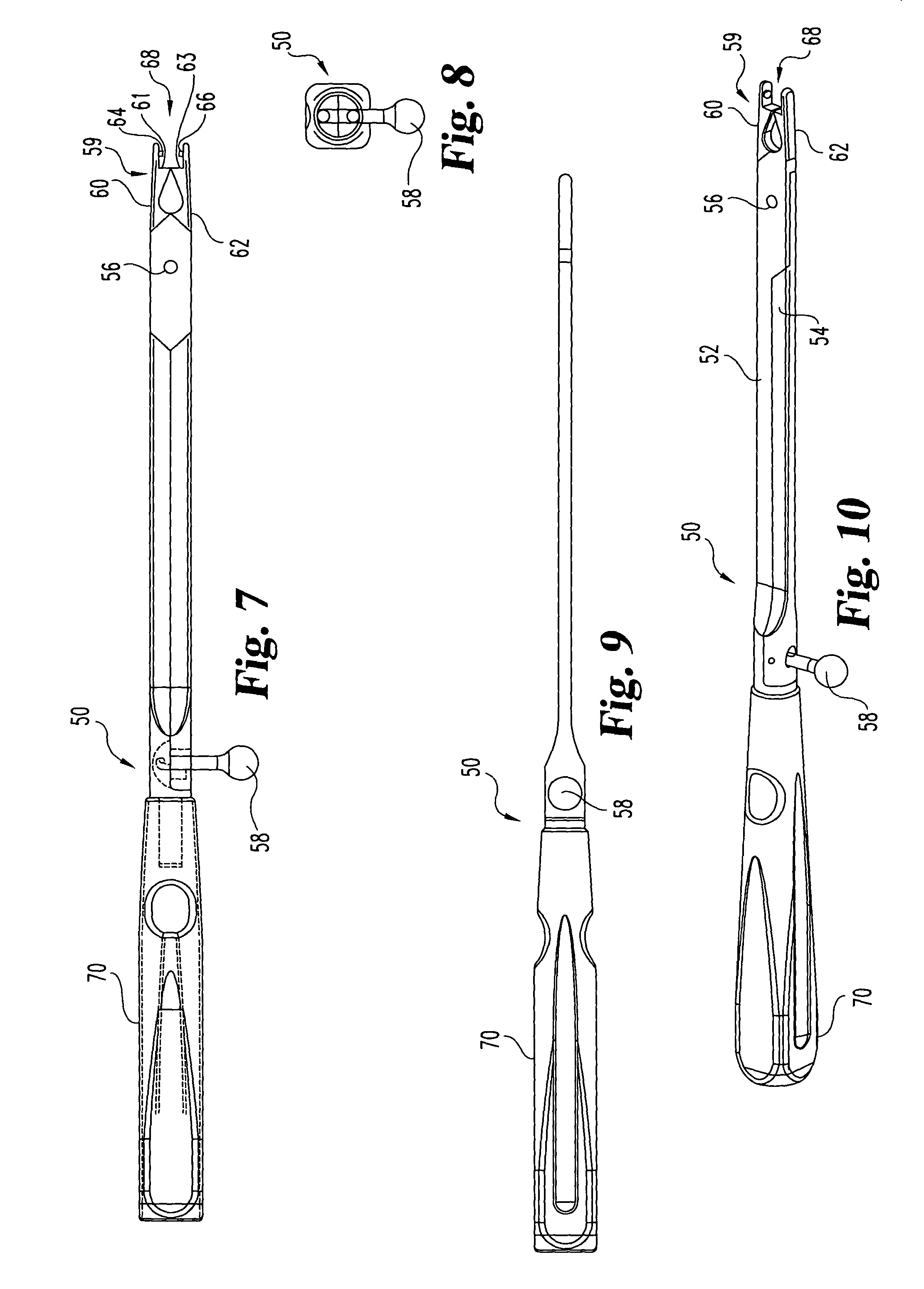Interbody fusion grafts and instrumentation
a fusion graft and instrumentation technology, applied in the field of implants, can solve the problems of spinal disc displacement or damage, pain and instability, nerve damage, muscle weakness, etc., and achieve the effect of facilitating insertion and enhancing bone growth and eventual fusion
- Summary
- Abstract
- Description
- Claims
- Application Information
AI Technical Summary
Benefits of technology
Problems solved by technology
Method used
Image
Examples
Embodiment Construction
[0109]For the purposes of promoting an understanding of the principles of the present invention, reference will now be made to the embodiments illustrated in the drawings, and specific language will be used to describe the same. It will nevertheless be understood that no limitation of the scope of the invention is intended thereby. Any alterations and further modification in the described processes, systems, or devices, and any further applications of the principles of the invention as described herein are contemplated as would normally occur to one skilled in the art to which the invention relates.
[0110]This invention provides bone implants for insertion into the intervertebral spaces between adjacent vertebrae following discectomy. The bone implants are useful for maintaining and / or restoring a desired spacing between adjacent vertebrae. The bone implants of the present invention include a recessed area that serves as a depot for receiving osteogenic material, thereby enhancing bo...
PUM
 Login to View More
Login to View More Abstract
Description
Claims
Application Information
 Login to View More
Login to View More - R&D
- Intellectual Property
- Life Sciences
- Materials
- Tech Scout
- Unparalleled Data Quality
- Higher Quality Content
- 60% Fewer Hallucinations
Browse by: Latest US Patents, China's latest patents, Technical Efficacy Thesaurus, Application Domain, Technology Topic, Popular Technical Reports.
© 2025 PatSnap. All rights reserved.Legal|Privacy policy|Modern Slavery Act Transparency Statement|Sitemap|About US| Contact US: help@patsnap.com



